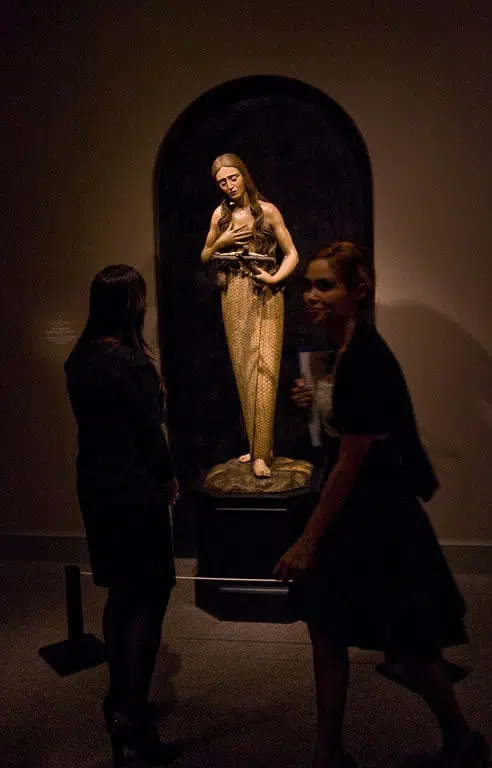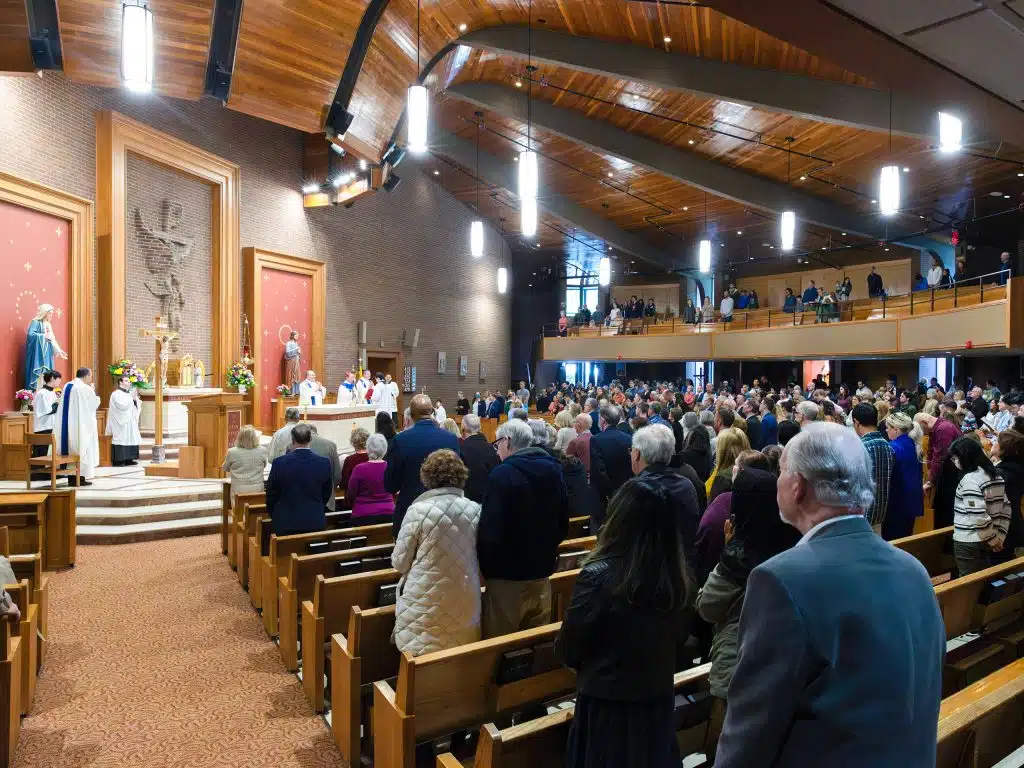St. Mary Magdalene (1st century)
Feast Day: July 22
The story is in St. Luke’s Gospel. An unnamed woman, a notorious sinner, bearing an alabaster jar of perfumed oil enters unannounced into a house where Jesus is a guest. Without saying a word to the host or to the apostles or even to Christ Himself, she breaks open the jar and pours the scented oil over the Lord, washes His feet with her tears, then dries them with her long hair. For nearly 1,700 years tradition has identified this penitent woman as St. Mary Magdalene. Ever since artists have depicted St. Mary holding a beautiful urn, which has lead perfumers to take Mary as their patron saint.
Was Mary Magdalene a notorious sinner? The short answer is, “No.” It was Pope St. Gregory the Great who popularized the idea of conflating three separate Marys in the gospels into one. According to Pope Gregory, Mary Magdalene was the unnamed sinner who wiped Jesus’ feet with her hair, and Mary, the sister of Martha and Lazarus, and the Mary who was the first to see the Risen Christ.
Who was the real Mary Magdalene? The Gospels tell us she was one of the women who traveled with Christ and the apostles. St. Luke says Jesus cast seven demons out of Mary, but he does not say that she was promiscuous let alone a prostitute (another bit of “common knowledge” that has attached itself to poor St. Mary).
We know from the Gospels that with the Blessed Mother, St. John, and several other women who remained faithful to Jesus, Mary Magdalene followed Our Lord to Calvary and witnessed his death and burial. On the first Easter morning she encountered the Risen Christ in the garden but did not recognize Him until He spoke her name. Then the Lord sent her to tell the apostles that He had risen from the dead.
Because St. Mary Magdalene was granted the privilege of announcing the Resurrection, St. Hippolytus (circa 170-235) gave her the title, “Apostle to the Apostles.” In June 2016, Pope Francis confirmed the title St. Hippolytus gave her centuries earlier by elevating the day the church celebrates St. Mary Magdalene from a simple memorial to a feast – a distinction which now she shares with the Twelve Apostles.
As with so many of the Lord’s disciples, legend steps in where the New Testament leaves off. The most persistent tradition claims that after the descent of the Holy Spirit upon Our Lady and the apostles and disciples, Mary Magdalene, Martha, Lazarus, and Maximinus (one of the Lord’s 72 disciples) traveled to the south of France where they preached the Gospel. Later Mary Magdalene retired to a cave east of Marseilles to live the rest of her life as a hermit. Pilgrims have visited the Holy Cave at least since the fifth century, and they still come to venerate the woman who was the first witness to the Lord’s resurrection.
Craughwell is the author of Saints Behaving Badly and This Saint Will Change Your Life.



The Good Shepherd